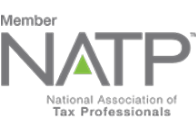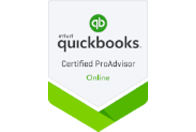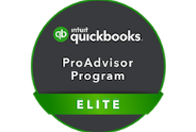The business use of vehicles is a common practice across various industries. And the Internal Revenue Service (IRS) allows businesses to deduct vehicle-related expenses that were incurred for its trade or business, lowering the taxable income that ultimately results in tax savings.
There are two methods to compute for the business use of vehicle, the standard mileage rate method and the actual expense method. And if you qualify to use either one of them, you may want to determine which method can provide you with a larger deduction before deciding on which to use for accounting your vehicle-related expenses.
Standard Mileage Rate Method
This is a simplified method for computing vehicle expenses in which you get to use a standard rate, set by the IRS, for every business mile driven. It is a time-saving approach in which it eliminates the need to track and document the actual vehicle-related expenses.
The IRS announces the following rates for the year 2023.
- 65.5 cents per mile driven for business use.
- 22.0 cents per mile driven for medical or moving purposes for qualified members of the Armed Forces.
- 14 cents per mile driven in service of charitable organizations.
These IRS rates apply to electric, hybrid-electric, and fuel-powered vehicles. It is based on the study of fixed and variable costs of operating a vehicle including depreciation, lease payments, maintenance and repairs, fuel or electricity, oil, insurance, or vehicle registration fees. Hence, you can no longer claim the actual costs of those expenses.
However, you can still account for the actual costs of the following even if you opt to use this method:
- Parking and Tollways (except for parking fees at your workplace which is a commuting personal expense).
- Registration Fees and Taxes
- Interests on Vehicle Loans (does not apply if you are an employee unless you are self-employed or the business owner)
To use the standard mileage rate, it must be chosen in the first year the vehicle is available for use in your business. In succeeding years, you may decide to continue using the standard mileage rate or change to the actual expense method. However, if the vehicle is under Lease, you can only use one method throughout its entire lease period.
You cannot use the Standard Mileage Rate Method if:
- You use more than 5 cars simultaneously.
- You claimed depreciation using any method other than straight line method.
- You claimed a Section 179 deduction or special depreciation on the car.
- You claimed actual expenses after 1997 for a leased car.
- It is a Company-Owned Vehicle, in which case you must use the Actual Expense Method.
Actual Expense Method
You may choose to deduct the actual expenses incurred for the vehicle-related expenses. These include the following:
– Registration Fees and Taxes – Vehicle Loan Interests
– Insurance – Tolls and Parking
– Repairs and garage rent – Depreciation
– Fuel and Oil
Many people mistakenly believe that using the actual expense method eliminates the need to monitor their business mileage. But keep in mind that although this method allows you to deduct the actual costs of owning and operating a vehicle, you are still limited to deducting only the business-related portion of the total usage.
Demonstrative Application of the Two Methods
Let us say that you use your personal vehicle for your business or profession. Your odometer shows that you drove 8,000 miles during the year, in which 5,000 miles were for business-related activities.
Given this data, your business use percentage is 62.5% (5,000 miles / 8,000 miles x 100).
Now let us assume that you incurred $3,000 for your fuel, repairs, insurance, depreciation, etc. While your total parking and toll fees amounted to $350.
Your deductible expense under the two methods will be as follows:
- Actual Expense Method:
$2,093.75 = ($3,000 + $350) x 62.5% - Standard Mileage Rate:
$3,625 = (5,000 miles x 65.5 cents) + $350*
*Actual costs of parking and toll, registration, and interest may still be accounted under the Standard Rate Method
Tracking the business miles driven is crucial regardless of the method you choose to calculate for your vehicle related expenses. You can do this by keeping a vehicle logbook or by using digital tools or applications. Remember, the IRS does not accept estimates of how much was driven for business use. You must maintain accurate and detailed records of receipts and documentation of your business travels such as your purpose, place visited, date, and mileage for each trip. You may also want to consult a tax professional to ensure compliance with the IRS and to determine the applicable or the most advantageous method for calculating your vehicle-related expense based on your specific situation.
Want to learn more?
Are you using your personal car for business or planning to buy a company car? Keep track of our upcoming blog. We at 1099 Accountant can help you decide!
You may want to consult and work with 1099 Accountant – We offer online bookkeeping, online advisory services and online tax and accounting services. We offer reasonable rates. We only work with independent contractors, freelancers, and one-person business. We work with locum tenens from California to New York City and everywhere in between. Yes, even Hawaii!
Contact us toll-free (855)529-1099 or make an appointment for a free consultation. https://1099accountant.com/contact/











